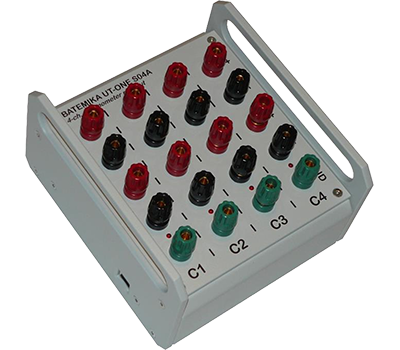Temperature

Temperature testing is a crucial step in a wide range of industries, such as manufacturing, food and beverage, pharmaceuticals, oil and gas, and aerospace.
Fluctuations in temperature, even by one degree, can have a significant impact on product quality and safety. When conducting temperature tests on products within a controlled environment, climatic chambers are a vital instrument.
Since many temperature-testing equipment, including climatic chambers, tend to drift, frequent calibration is required for their proper use and to obtain reliable and consistent outcomes. As reputable calibration specialists in temperature and humidity measurement equipment, we can assist you with our calibration services.
The calibration of a climatic chamber, similar to that of other measurement instruments, changes with time. Therefore, periodic calibration is necessary to ensure its accuracy and optimal performance.
Benefits of Calibrating a Climatic Chamber
- Regular calibration assists with maintaining the precision of these temperature-controlled chambers and minimizes the potential risks and issues that can arise from erroneous measurements.
- When a climatic chamber is calibrated, it ensures compliance with industry regulations and government standards, allowing the device to be used safely.
A calibrated climatic chamber controls temperature and produces consistent findings, making it simple to derive valid conclusions.
Temperature Calibration
When it comes to temperature calibration services, our lab provides the lowest uncertainties and best reference standards. Our reference standards include those from Hart Scientific, Isotech, Burns Engineering, and Fluke. We use intrinsic standards to calculate and deliver minimal uncertainty.
Our measuring solutions are supported by the expertise of reputable temperature measurement specialists and climatic chamber manufacturers.
The temperature sensors that we calibrated are traceable to SI units of measurement through NIST or recognized national and international standard organizations.
Moreover, we are able to calibrate utilizing triple water point realization and certified fixed-point standards to the International Temperature Scale of 1990 (ITS-90) range of -196°C to 250°C. Our uncertainties include the temperature range of 50 mK at -196°C to 30 mK at 250°C.
In addition to calibration, we provide full solutions for customized temperature instruments and sensors, such as data loggers, transmitters, and indicators.
For any of your temperature-testing instrument calibrations, reach out to us today!
- Resistance Temperature Detectors (RTDs)
- Industrial Platinum Resistance Thermometers, e.g., PT100, etc. (PRTs)
- Thermocouples (Type K, Type J, etc.)
- Thermistors
- By simulation mode (Current / Voltage outputs correspond to ohms)
- Hand-held indicator with probes, e.g., Dostmann P655 Log
- Temperature sensors incorporated in humidity instruments
Additionally, we are able to calibrate utilising triple water point realisation and certified fixed point standards to the International Temperature Scale of 1990 (ITS-90) range of -196°C to 250°C. Our uncertainties include the temperature range of 50 mK at -196°C to 30 mK at 250°C.
We provided a full solution for customised temperature instruments and sensors, such as data loggers, transmitters, and indicators, in addition to calibration.
